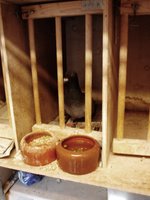I keep on getting URLs sent and find hundreds of similar articles about the threat of RFID tags being read from miles away and evil people with evil devices reading your tiny data on your chip and then owning your private life, your credit card account and your dog.
Don't get me wrong. I believe that it is possible to read RFID tags from far, and I believe that the data on a chip can be hacked, the issue is another one.
First of all, even though RFID tags (and there are quite a few different ones out there that require different readers) can be read, the data on them is still encrypted, so there is another hurdle. Second, in none of the articles (so far) have I actually found a serious example of data that could be used to damage your privacy rights or rids you off your money. Unless that is of course, if you put your pincode on your chip, but as far as I remember they still tell us not to put card number and pincode both together.
In one article, a US citizen mentioned the worry, that terrorists could filter out US citizens out of a crowd of people and kidnap only them. Interesting.
Apart from your behaviour, language accent, maybe way you dress or even your passport, I guess it would be nearly impossible to get this information otherwise and we all don't want to have peaceful canadians kindapped.
Passports have been copied(about every generation of them), creditcards, chipcards, phones have been phreaked, email accounts and servers hacked and spammed, audio tapes, VHS, CDs and DVD have been copied, Playstations have been hardware and software hacked, mobile phone adressbooks stolen over bluetooth, perfect medicament-fakes like Viagra-Pills enter the market on a level that the pharma-cons haven't full control over, bus and concert tickets have been copied despite hologram labels, designer label products have been copied to the extend that the counterfeiters have access to the same factories like the brand's company and last but not least, money has been reproduced. The list is endless.
Apart from your goldfish at home, everything out there could be a copy and you don't even know it. Understandable as our senses are pretty limited. The point is rather, who says it is a copy when we live in times, where every second pop song is not a copy but a cover version and your identity is more proven through non-living things rather than your own living persona.
And who is gonna pay for the inflation of product security.
I remember when we worked on global and growable creditcard concepts with IDEO, we ended up talking about the essence of trust that eventually lies behind all these transaction security procedures and disembodied accounts.





















